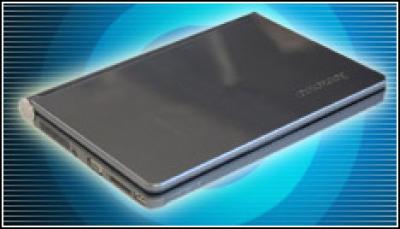Samsung Introduces Four New Atom-based Netbooks

Samsung is the latest to show off new equipment ahead of the Consumer Electronics Show, after it announced four new netbooks
Samsung has unveiled the next generation of more energy efficient netbooks ahead of the Consumer Electronics Show in Las Vegas later this week.
The new devices include the Samsung N210, N220, N150 and NB30.

All four models include 10.1-inch LED anti-reflective displays, integrated Digital LiveCam for video conferencing and the Intel Atom N450 processor, which has been designed with an eye toward netbooks’ need for increased energy efficiency.
Samsung claims that the N210 and N220 will run for up to 12 hours on a full battery charge, while the N150 and NB30 will putter for a respective 8.5 hours and 11 hours, respectively.
In the name of speed, the N210 and N220 can go online without needing to first boot Windows, courtesy of the Phoenix HyperSpace tool. In the name of durability, the NB30 includes a hard disk drive freefall sensor that “parks” the drive if it detects the device in mid-drop; furthermore, a watertight seal around the device protects it from immersion in up to 50cc of spilled water for up to 10 seconds. Phoenix FailSafe software allows a PC to be tracked if stolen, and features the ability to encrypt, manage, retrieve and erase data.
Samsung said the devices will be available in early January.
Samsung and Phoenix Technologies announced a strategic partnership in October designed to deliver instant on-off capabilities and longer battery life to netbooks. Analysts at the time of that announcement speculated that the two companies were preparing to offer dual-boot devices that utilised BIOS to offer those instant-on capabilities, or else a version of the BIOS environment intended for surfing the web and checking web-based email.
Traditionally, the BIOS alternative environment is run before the operating system, to ensure that the system is both bug- and error-free. Evidently, some fruits of the Samsung and Phoenix collaboration are present, in some form, in the new devices.
By the end of 2009, other companies had offered similar instant-on capabilities, including Acer, which introduced the Aspire One AO250 netbook in the middle of October. Running both Windows XP Home and open-source Google Android, the Aspire One can rely on the latter system for instant-on Internet capability.
Hewlett-Packard’s 5310m netbook offers QuickLook3, which gives 10 seconds of email capabilities on a powered-down notebook, as well as 20 seconds of browsing thanks to a feature called QuickWeb. Hewlett-Packard claimed that those instant-on applications run separate from the device’s operating system, allowing them to operate virus-free.
Samsung has been exploring new markets for its netbooks, including a deal with The New York Times, announced on 24 November, to offer the newspaper’s readers a deal on the Samsung Go netbook. Under the terms of that offer, readers who order a subscription to the Times Reader 2.0 for $170.40 (£106) will receive $100 (£62) off a 2.8-pound Samsung Go Special Edition with the Reader preinstalled.